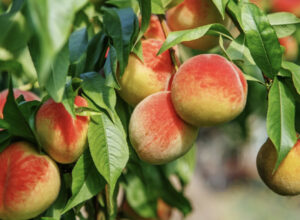Comprehensive Guide on How to Take Care of Orange Trees

The sweet orange, scientifically known as Citrus x sinensis, is an exquisite member of the Citrus family. Full-size trees to dwarf variants host this fruit, making it a versatile choice for different gardening spaces. Their preference for warm climates means they thrive in regions without extreme cold or frost, such as the commercial citrus belt that spans from Southern California to Florida.
Oranges are now a staple in many parts of the world, but their journey began in ancient times. Historically, oranges originated from Southeast Asia and were later spread to other parts of the world through trade routes. The Spanish explorers introduced them to the Americas, where they became widely cultivated and loved. Knowing the historical context of the fruit you are growing can add a deeper appreciation for every orange you harvest.
Common Orange Varieties
- Valencia oranges: Renowned for their origin in Orange County, California, these are popular for making fresh orange juice.
- Trovita: Hardy and robust, these oranges withstand colder climates better than their counterparts.
- Ruby (or Blood): Recognized for their jewel-toned flesh, they offer a tangy taste and have fewer seeds.
- Washington Navel oranges: Ideal for those who dislike seeds, these oranges peel effortlessly and flourish in Southern California.
Apart from the sweet varieties, there are also sour oranges like Willowleaf and Seville, which are perfect for creating marmalade.
The Different Varieties of Orange Trees
Orange trees come in a diverse range of varieties, each having its unique taste, texture, and growth characteristics. Before diving deep into the care of these trees, understanding these varieties can help gardeners make informed choices.
Comparative Table of Popular Orange Varieties
| Variety | Taste | Growing Climate | Time to Fruit | Special Features |
| Valencia | Sweet | Warm climates | 3-4 years | Best for juicing |
| Trovita | Mildly sweet | Cold-hardy | 2-3 years | Resistant to cold |
| Ruby (Blood) | Tart & Tangy | Warm climates | 2-3 years | Vibrant red flesh |
| Washington Navel | Sweet | Warm climates | 3-4 years | Seedless & easy to peel |
The Nutritional Powerhouse: Benefits of Oranges
Apart from their refreshing taste, oranges are renowned for their health benefits:
- Rich in vitamin C: A medium-sized orange can provide over 100% of the daily vitamin C requirement. This vitamin plays a crucial role in skin health and immunity.
- Dietary Fiber: Oranges are a good source of dietary fiber, which aids in digestion and helps maintain a healthy weight.
- Antioxidants: They contain multiple antioxidants that protect the body against free radicals and support overall health.
- Heart Health: Regular consumption of oranges can support heart health due to their potassium content and cholesterol-lowering fiber.
Whether you’re consuming fresh orange juice or enjoying a fruit salad, incorporating oranges into your diet is beneficial.
The Benefits of Growing Orange Trees
Orange trees, often associated with sun-kissed orchards in balmy climates, are more than just fruit-bearing plants. They carry a plethora of benefits that not only contribute to personal health and well-being but also have positive impacts on the environment. Let’s delve into some of the remarkable advantages of cultivating these citrus wonders.
- Nutritional Powerhouse: Oranges are renowned for their vitamin C content, a powerful antioxidant that boosts the immune system, promotes healthy skin, and aids in the absorption of iron from plant-based foods. They’re also a good source of several B vitamins, potassium, and dietary fiber. Growing your own ensures you get the freshest fruit packed with these nutrients.
- Air Purification: Like other plants, orange trees undergo photosynthesis, a process that absorbs carbon dioxide and releases oxygen. But more than just oxygen production, they release phytoncides, which reduce airborne microbes, improving the surrounding air quality.
- Sensory Delight: An orange orchard is a feast for the senses. From the delicate white blossoms that exude a heady fragrance in spring to the vibrant orange fruit contrasting with deep green leaves, it’s a sight to behold. The rustling of leaves in the breeze and the feel of the sun-warmed fruit add to the sensory experience.
- Environmental Impact: Growing orange trees aids the environment in multiple ways. The trees provide shelter and food for various wildlife, particularly pollinators. They also play a role in soil conservation, preventing erosion with their robust root systems. Moreover, cultivating trees locally can reduce the carbon footprint linked to transporting fruit over long distances.
- Therapeutic Gardening: Engaging with nature, especially through gardening, has therapeutic benefits. It’s known to reduce stress, anxiety, and even symptoms of depression. The act of planting, pruning, harvesting, and simply being amid the greenery can be incredibly grounding and rejuvenating.
- Economic Benefits: On a larger scale, orange cultivation can be a lucrative agricultural venture. Even at the home garden level, growing your own oranges can be cost-effective in the long run, saving money that might otherwise be spent on store-bought fruit. Plus, there’s the potential of selling or bartering surplus produce.
- Sustainable Living: With the world gravitating towards sustainable living, growing your own fruit ensures you know exactly where your food comes from. It reduces reliance on commercially grown produce, which often involves the use of pesticides and other chemicals.
Incorporating orange trees into your garden or orchard isn’t just about the delightful prospect of plucking juicy fruit off a branch. It’s a holistic approach to healthier living, environmental stewardship, and creating a slice of paradise right in your backyard.
Initiating the Growth: When and Where to Plant
- When to Plant Oranges: Being tender plants, oranges should be sowed at least six weeks post the last frost date, during consistently warm temperatures. Those residing within the commercial citrus belt have the privilege of planting them anytime, thanks to the year-round warmth.
- How to Choose the Right Location: For robust growth, select a spot with abundant sunlight and soil rich in loam that drains well. Remember to allocate ample space for the roots, ensuring a 20-foot clearance for full-sized trees and half of that for the smaller varieties.
A Deep Dive: Cultivating Orange Trees from Seeds to Saplings
1. Seed Extraction and Preparation
Extract seeds directly from a ripe orange and immerse them in water for 24 hours. Discard any seeds that float, as they’re unlikely to germinate.
2. Soil Preparation and Seed Planting
For germination, a standard potting mix suffices. Plant the seeds about an inch deep in trays and enrich the soil with compost or mulch for added nutrients.
3. Germination Conditions
Place the trays in a warm, moist location with indirect sunlight. Moist paper towels or plastic bags can be placed over the trays for a few weeks to ensure optimum moisture levels.
4. Transplanting Young Plants
Once sprouts appear, shift them to individual pots, ensuring minimal disturbance to the root ball. Using a sufficiently large pot, plant them in well-draining soil and position in a warm spot indoors with ample sunlight.
Mature Care: Transplanting, Harvesting, and Pruning
How to Transplant Orange Trees. Starting in pots allows for better control. When the time comes, carefully remove the tree, ensuring the root ball remains intact. Dig a hole slightly bigger than the root ball in well-drained soil and water regularly.
Harvesting Oranges. Use sharp tools like shears to detach the oranges. Always remember: once picked, oranges don’t continue to ripen. Store them in a cool environment where they can last for up to three weeks.
Pruning for Optimal Growth. Regular pruning promotes fruit-bearing and growth. The first couple of years are crucial for shaping. Post the third year, prune branches that bore fruit the previous year and remove any brown leaves or dying branches.
Expert Tips for Nurturing Orange Trees
- Watering: Initially, consistent watering is paramount. Aim for about an inch weekly, adjusting based on soil moisture.
- Soil Quality: Invest in well-draining soil with a pH ranging from 5.0 to 6.5. A loamy soil rich in nutrients, comprising approximately 40% sand, 40% silt, and 20% clay, is ideal.
- Pest Control: Aphids, borers, and spider mites can be problematic. Use organic pesticides or homemade solutions to combat these pests. Netting and fencing can deter larger animals.
- Fertilizing: Enriching soil with organic compost can stimulate plant immunity. Avoid mulch for orange trees.
- Regular Weeding: Prevent diseases by weeding regularly, preferably in the mornings when the soil is moist.

Conclusion
Caring for orange trees can be a fulfilling journey, from watching them sprout to enjoying the fruits of your labor. By adhering to the aforementioned guidelines, you’re well on your way to reaping the bounties of a thriving orange tree.
FAQ
1. How often should I water my orange tree?
Young orange trees need consistent moisture and should be watered every 7 to 10 days during drier periods. Mature trees, however, have more drought tolerance and can be watered less frequently. Always ensure the soil is moist but not waterlogged.
2. Can I grow an orange tree indoors?
Yes, dwarf varieties of orange trees can be grown indoors in containers. They need ample sunlight, so place them near a south-facing window or use grow lights. Indoor orange trees also require proper humidity and regular fertilization.
3. When is the best time to prune an orange tree?
The ideal time to prune is in late winter or early spring before new growth begins. This helps in shaping the tree, removing dead or diseased branches, and ensuring better fruit production.
4. Why are the leaves on my orange tree turning yellow?
Yellow leaves can be a sign of various issues, including water stress (either too much or too little), nutrient deficiencies, or diseases. It’s essential to diagnose the exact cause to address the problem effectively.
5. How can I protect my orange tree from pests?
Regular inspection and prompt removal of affected parts can help. Using organic or natural pesticides, introducing beneficial insects like ladybugs, and practicing companion planting are effective ways to manage pests.




